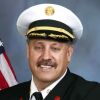There is no doubt that when our citizens have a crisis, they turn to the fire service – for just about everything. Over the years, we have seen the expansion of our mission from primarily fire-focused responses to now include EMS, hazmat response, technical rescue, emergency management, plus smaller roles on SWAT teams, as lifeguards and even in land management.
When I worked in St. Louis, Missouri, if a person fell in their home and needed help to get off the floor, the police department was sent to the scene. Now, in most places across the United States, the job of assisting individuals who have fallen and needing help up has shifted to the fire service.
Another example emerged a few years ago, as some fire departments started to embrace the concept of delivering home healthcare through a variety of models designed to treat the patient in the home in order to avoid admission (or readmission) to the hospital. Some fire departments have partnered with hospitals to do follow-up visits after the patient was discharged from the hospital, with the goal of preventing readmission.
[Listen next: Unpacking mobile integrated healthcare in the fire and emergency services]
Police reform leads to change
Some would say all of this has been mission creep – another example of firefighters being burdened with new roles and responsibilities. Others would say it has increased the number of firefighters in the department, demonstrated added value, and brought additional revenue into the fire department. Still, I have heard others say that when you call 911, you’re going to get the fire department unless a crime has been committed, and others note that even on criminal matters, you’ll get a fire department response if it is a shooting, stabbing or another type of assault.
Regardless of how you believe this fire service evolution occurred, it appears after last summer’s civil unrest, elected officials are bound and determined to bring about police reform – an issue that includes questions over law enforcement response to behavioral health issues. In many communities, if a 911 operator gets a call about someone who is having a mental health crisis, the only real option is to send the police. With some of the police reform options proposed, police would be removed from such mental or behavioral health crisis responses.
Most of this makes sense. For many years, the police officer responding to someone having a behavioral emergency had few options. It was the hospital or jail. Some patients were placed in handcuffs and taken to jail to keep them from harming themselves or others. But if a cancer patient who needed treatment was walking on the streets, a police officer would never put them in handcuffs and take them to jail.
So, who are the elected leaders turning to as part of this police reform related to mental health? Will the fire department please take one step forward!
What appears to be emerging in many communities is a model with a fire department unit responsible for responding to behavioral health emergencies instead of a police officer. Many fire department units consist of a specialized team, including those trained in crisis intervention, maybe a sociologist, a psychologist or another trained mental health expert.
Local and national programs
One of the programs that many communities have turned to when modeling their own is the Crisis Assistance Helping Out On The Streets (CAHOOTS) program in Eugene, Oregon. Founded in 1989, CAHOOTS is a community-based public safety system that provides mental health first response for crises involving mental illness, homelessness and addiction.
Two-person teams consisting of a medically trained person (nurse, paramedic or EMT) and a crisis worker trained in crisis intervention respond to scenes to manage patients with mental health issues, welfare checks, substance abuse, suicide threats and other situations through de-escalation and harm-reduction techniques.
Similar teams are starting to pop up in communities throughout the United States.
Further, the federal Substance Abuse and Mental Health Services Administration has established minimum expectations for teams, including a crisis response specialist who has personally experienced mental health challenges, and the team should respond to the calls without law enforcement.
Also at the federal level, the Federal Communications Commission (FCC) responded to the growing suicide epidemic across the U.S. by requiring all phone service providers to route calls made to 988 to the National Suicide Prevention Lifeline crisis center by July 16, 2022. No longer will individuals have to look up the 800 number.
It’s time to step up
The question for many fire departments is whether they will stand up these teams and, if so, where will the funding and the resources come from? Some argue that FTE positions need to be shifted from police departments to fire departments as job responsibilities and roles shift. Others contend that police department staffing should be left in place and communities will need to find funding to implement these teams.
No doubt, the United States fire service will once again step up to the challenge of responding to the needs in our communities when it comes to dealing with mental and behavioral health. What those ultimate models will look like, how they will be funded, and how successful they will be has not played out in many communities. But we do know that you can add mental health response and crisis teams to our growing list of responsibilities.













